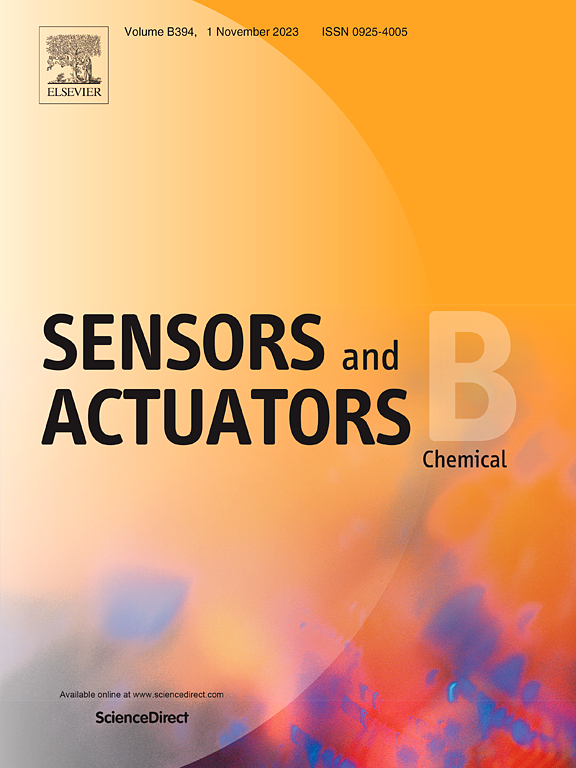Innovative bifunctional copper nanoflowers for sensitive serotonin detection and enhanced depression diagnosis and drug efficacy evaluation
IF 8
1区 化学
Q1 CHEMISTRY, ANALYTICAL
引用次数: 0
Abstract
Serotonin (5-hydroxytryptamine, 5-HT) is a monoamine neurotransmitter crucial for mood regulation. Quantitative assessment of the 5-HT levels provides an objective indicator of depression. However, stringent conditions are required for effectively and conveniently detecting trace-level concentrations of 5-HT in complex biological matrices. Despite the high specificity of enzyme-mediated signal amplification, which is widely used in biosensing, detecting low-abundance biomarkers under such conditions remains challenging. Herein, streptavidin (SA) and horseradish peroxidase (HRP) were integrated to synthesize bifunctional copper nanoflowers (Cu3(PO4)2–SA–HRP NFs) for the development of a straightforward 5-HT-detection biosensor. The prepared hybrid NFs offer inherent advantages such as enzyme protection, remarkably enhancing enzyme catalytic capability and stability relative to those of free enzymes. Cu3(PO4)2–SA–HRP NFs demonstrate notable simplicity and sensitivity, exhibiting a low detection limit (LOD) of 310.65 pg mL−1. Sensitive assessments of the 5-HT levels in the rat serum and hippocampus are performed, allowing for the evaluation of the antidepressant effects of various drugs. Stable and sensitive detection results are obtained for the spiked human serum samples. Overall, the proposed colorimetric sensor presents a promising, straightforward platform for evaluating drug efficacy and monitoring depression.

创新的双功能铜纳米花用于敏感血清素检测和增强抑郁症诊断和药物疗效评估
5-羟色胺(5-羟色胺,5-HT)是一种单胺神经递质,对情绪调节至关重要。定量评估5-羟色胺水平提供了抑郁的客观指标。然而,要有效方便地检测复杂生物基质中痕量5-羟色胺浓度,需要严格的条件。尽管在生物传感中广泛应用的酶介导的信号扩增具有高特异性,但在这种条件下检测低丰度生物标志物仍然具有挑战性。本文将链霉亲和素(SA)和辣根过氧化物酶(HRP)结合合成双功能铜纳米花(Cu3(PO4) 2-SA-HRP NFs),用于开发一种直接检测5- ht的生物传感器。与游离酶相比,制备的杂化NFs具有酶保护等固有优势,显著提高了酶的催化能力和稳定性。Cu3(PO4) 2-SA-HRP NFs具有显著的简单性和灵敏度,检测限(LOD)为310.65 pg mL−1。对大鼠血清和海马体中的5-羟色胺水平进行敏感评估,从而评估各种药物的抗抑郁作用。对加标后的人血清样品的检测结果稳定、灵敏。总的来说,所提出的比色传感器为评估药物疗效和监测抑郁症提供了一个有前途的、直接的平台。
本文章由计算机程序翻译,如有差异,请以英文原文为准。
求助全文
约1分钟内获得全文
求助全文
来源期刊

Sensors and Actuators B: Chemical
工程技术-电化学
CiteScore
14.60
自引率
11.90%
发文量
1776
审稿时长
3.2 months
期刊介绍:
Sensors & Actuators, B: Chemical is an international journal focused on the research and development of chemical transducers. It covers chemical sensors and biosensors, chemical actuators, and analytical microsystems. The journal is interdisciplinary, aiming to publish original works showcasing substantial advancements beyond the current state of the art in these fields, with practical applicability to solving meaningful analytical problems. Review articles are accepted by invitation from an Editor of the journal.
 求助内容:
求助内容: 应助结果提醒方式:
应助结果提醒方式:


